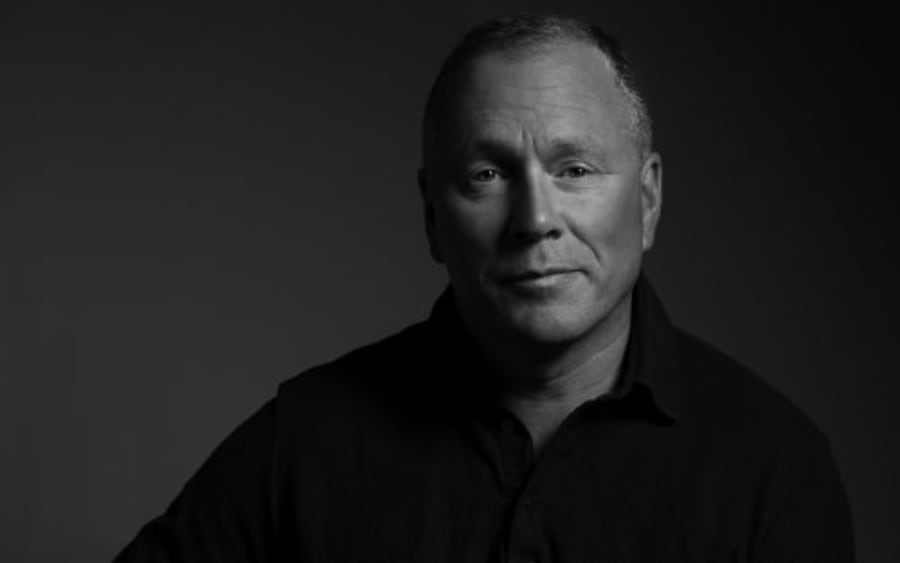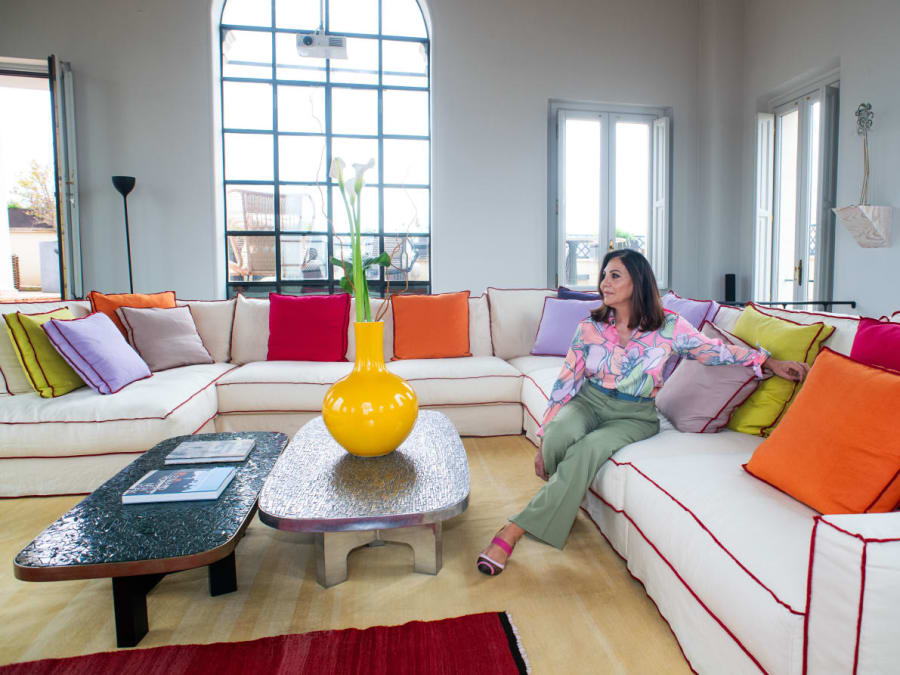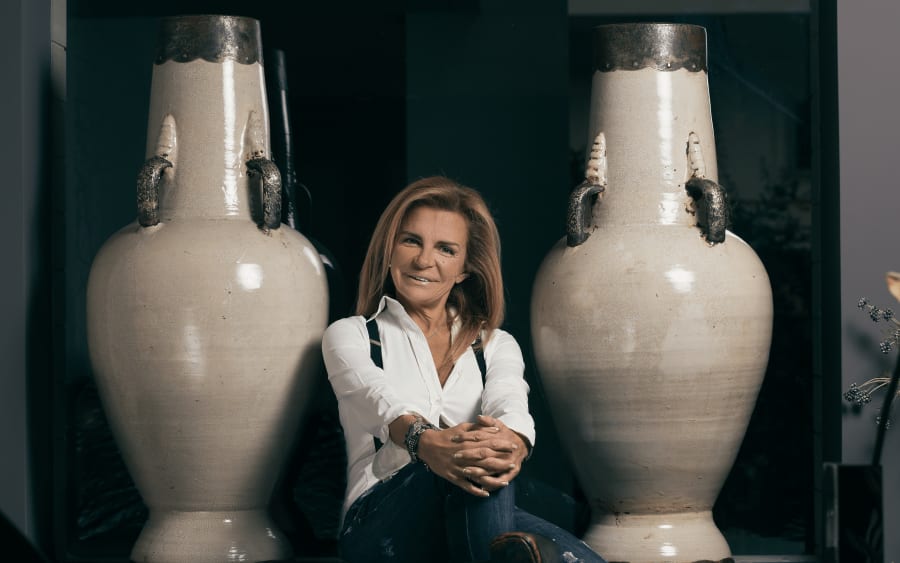‘I feel very lucky that I trained as an artist. Studying sculpture at Camberwell and Chelsea in London, I ended up being taught and influenced by amazing women artists such as Phyllida Barlow, Cornelia Parker, and Helen Chadwick. It was the Maggie Thatcher days, and we were all quite politicized. I had arrived from Edinburgh, which in those days was the least diverse place in the world to live in. Peckham opened my eyes.
‘I did buy a few pieces after college but on a very small scale as I was a practicing artist, so most of it would be either gifts or swaps. I really started collecting when I met my husband. At the time, he was collecting Irish painters in line with what his family had collected, such as Flanagan, Blackshaw, and F.E. McWilliam. He has an eye for it, and most of the works in our house are his acquisitions. But sculpture is my domain: I very much know what I think is successful, or when an artist is really achieving something special in their career. We each have our own territory, in a way.
‘Jupiter Artland started quite informally. When I had my children, I wanted to be closer to my family, so we moved back to Scotland. Suddenly, I became this full-time housewife, with children coming out of my ears, and my husband working 5 days a week in London. That space allowed me, funnily enough, to look at the land and realize how special it was – it had a magical quality that I loved. That’s when I picked up the phone to call some artists, including Marc Quinn and Charles Jencks. I was amazed by the enthusiasm whenever I talked to an artist about doing something outside. Gallery shows are very common, but being outside, having the time to incubate an idea, let it develop, and then to realize it – and for it to be there forever – is an extraordinary thing.
‘I still don’t think that I’m a collector; I think we are accomplices to the artists. I’m not really attracted to the collector world. Working with the artist, witnessing and being part of the process, that’s where the magic lies for me. If you always have people between you and the artist, you’re missing out on one of the most beautiful relationships that you can have. We don’t have a lot of works, we have about 40 now, but they’re all substantial. They all take around 6 months to build, usually require a lot of involvement from us, and most of them can never be moved.
‘I believe collections are a portrait of the people that assemble them. They mark time and development in taste, but also a political view. I’ve always been interested in the work of women artists. I went from working with my mentors such as Barlow or Parker to younger artists like Rachel Maclean or Laura Aldridge, who’s currently showing in the gallery space. Although I did indulge in some more muscular artworks like Jencks’s landforms!
‘What has changed in the last few years is that I have a sculpture park behind me now. I can sense the difference, especially when I’m talking to a young artist. I’ve had to realize that I am no longer that art student but a mature woman with an organization, and that comes with responsibility. Funnily enough, I thought it would affect my taste in art and the direction of the collection, but it hasn’t. I think great art speaks on a level that is in your DNA, and even though your tastes evolve, what inspires you doesn’t shift.
‘Great art is truly inspiring. You breathe in and you get a rush of adrenaline. I’m always looking for that kind of connection with artworks, and with people too. Take Joana Vasconcelos; it took a lot of studio visits and long conversations before the commission was finalized. I believe the resulting vibrancy of the work reflects these important moments. It is a sort of ritual that’s necessary because of the scale of each commission, so artists are very generous in taking some time to do in-depth thinking and talking.
‘The aim is to provide artists with an opportunity to do something that they wouldn’t necessarily have the space or infrastructure to do and make it permanent, which is always a huge statement for an artist. They’re always much more considered, but also willing to take risks, because in a way it’s a challenge.
‘Education has been at the core of our activities since the beginning. There has always been a gap in understanding just how important it is to have art in mainstream schools. Art helped shape my interests, my work ethic, and my political conscience, which is not something you’re going to get from playing hockey or football. Through creativity, you learn a different kind of language.
‘Our free learning program was picked up very quickly by all the schools in Scotland. Students of all ages can come, and we have wonderful teaching practitioners who look through Jupiter’s land and artworks and start conversations. It’s one of the most comprehensive programs in the country, and we’ve become quite well-known for it.
‘Jupiter+, which was launched in 2022, goes beyond this by bringing art to the high street, which is where half of Britain grew up. So far, we’ve taken one of the great artworks that we’ve commissioned for the park, Maclean’s upside mimi ᴉɯᴉɯ uʍop (2021), and installed it in empty shops on the high streets of Ayr, Perth, and Paisley. In an urban environment that is struggling economically, it becomes a different artwork and an important catalyst for thinking and challenging the status quo.
‘My concern is that young people have nowhere to go, and Jupiter+ is about bringing something back to the city center – curiosity, quirkiness, difference. Each time, we’re also setting up a learning space in another locale down the street, which hosts workshops and offers mentoring and coaching for young people. We’re trying to get them to realize that there is a future in being creative, as well as to encourage a sense of activism – in the sense of being active in their environment, in their communities, and voicing their political views. Art is the greatest vehicle for this because it welcomes diversity and cultivates critical thinking.’
Louise Darblay is a writer, editor, and translator based in Paris.
Caption for the full-bleed image: Portrait of Nicky Wilson. Photo: Eleanor Edmonson. Courtesy of Jupiter Artland.
Published on August 12, 2024.


